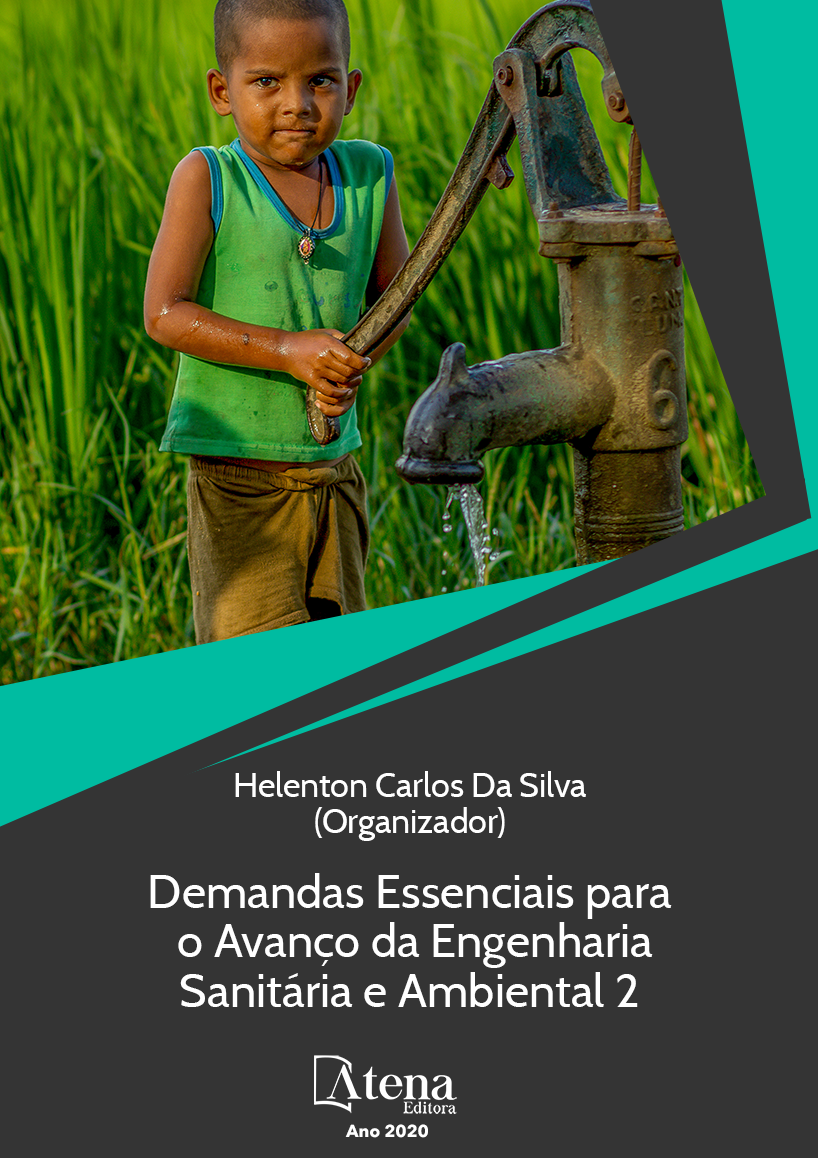
BIOFILTRAÇÃO PARA TRATAMENTO DE SULFETO DE HIDROGÊNIO
Um dos grandes problemas
enfrentados hoje é a falta de saneamento básico
no país e junto a esse cenário existe a resistência
da população em relação à instalação de novas
ETEs. Por causa dos incômodos causados
devido ao mau cheiro proveninente da liberação
de gases. Existem vários processos disponíveis
para o tratamento de odores em ETEs, dentre
eles destacam-se os processos químicos e
físicos, entretanto esses processos apresentam
alto custo de instalação e operação; a busca
pelo desenvolvimento de novas tecnologias
que contornem essa limitação nos processos
convêncionais é indispensável. O objetivo deste
trabalho foi analisar a eficiência de uma unidade
de biofltração, capaz de depurar o Sulfeto de
Hidrogênio (H2S). O biofiltro foi construído
nas instalações da ETE – Piracicamirim, onde
recebeu H2S desprendido dos efluentes líquidos
dos reatores de manta de lodo da estação. Em
média foi tratado 163,62 ppm de H2S por dia a
uma vazão média de 31 m3.h-1, atingindo altas
eficiências, e mostrando capacidade de tratar
concentrações maiores. A máxima eficiência
de remoção de H2S foi de 97,42%, em todo o
período de estudo os valores se mantiveram
acima dos 90%.
BIOFILTRAÇÃO PARA TRATAMENTO DE SULFETO DE HIDROGÊNIO
-
DOI: 10.22533/at.ed.47920210110
-
Palavras-chave: Biofiltro; ETEs; Sulfeto de Hidrogênio
-
Keywords: Biofiltration, WWTPs, Hydrogen Sulfide
-
Abstract:
One of the big problems faced today
is the lack of basic sanitation in the country and
together to this scenario exists a resistance of
the population in relation to the installation of the
new WWTPs (Waste Water Treatment Plants).
Because of the annoyances caused due to the
bad smell coming from the release of gases.
There are several processes available for the treatment of odors in WWTPs, among
them chemical and physical processes, however, these processes present a high cost
of installation and operation; the search for the development of new technologies that
circumvent this limitation in the conventional processes is indispensable. The objective
of this work was to analyze the efficiency of a biofiltration unit capable of purifying
Hydrogen Sulphide (H2S). The biofilter was built at the WWTPs - Piracicamirim facility,
where it received H2S from the effluent from the sludge blanket reactors of the station.
On average, 163.62 ppm of H2S per day was treated at an average flow rate of 31
m3.h-1, reaching high efficiencies, and showing ability to treat higher concentrations.
The maximum H2S removal efficiency was 97.42%, over the study period the values
remained above 90%.
-
Número de páginas: 14
- MICHELE LOPES CERQUEIRA
- ALEXANDRE PRADO ROCHA
- MONISE FERNANDES MELO


